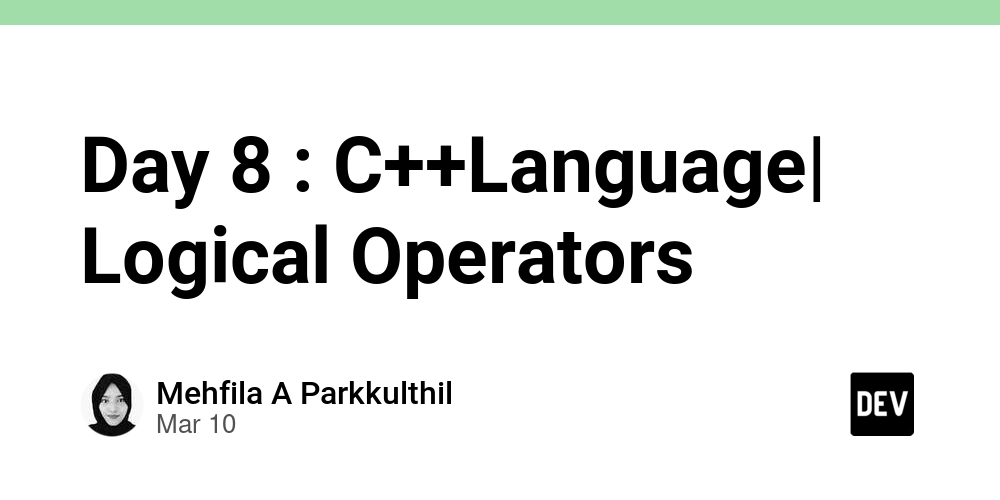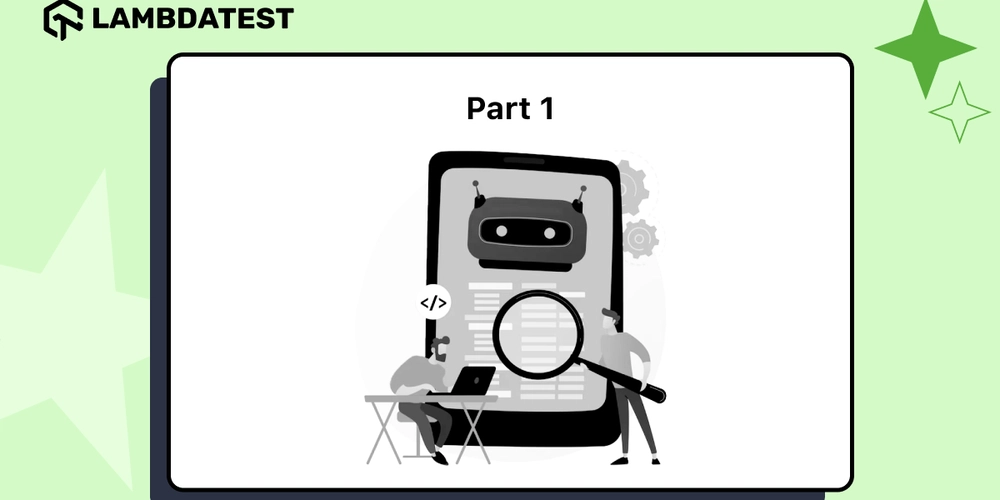Day 8 : C++Language| Logical Operators
Logical Operators The three most commonly used logical operators are AND, OR, and NOT AND (&&) This operator requires that all connected conditions be true for the overall statement to be true. For instance, in programming, if A and B represent conditions, A AND B returns true only if both A and B are true. #include using namespace std; int main() { int x = 6; int y = 4; cout 3 && x < 10); // returns true (1) because 6 is greater than 3 AND 4 is less than 10 . //since both statement are true , result will be true satisfying and operator return 0; } OR ( || ) This operator allows for flexibility—only one of the connected conditions must be true. In the statement A OR B, the result will be true if either A or B (or both) is true. #include using namespace std; int main() { int x = 5; int y = 3; cout 1 || x < 3); // returns true (1) because one of the conditions are true (5 is greater than 1, but 5 is not less than 3) return 0; } NOT (!) NOT inverts the truth value of a single condition. If A is true, then NOT A will be false, and vice versa. #include using namespace std; int main() { int x = 6; int y = 4; cout 3 && x < 10); // returns false (0) because ! (not) is used to reverse the result return 0; } Uses of logical operators They are implemented in conditional statements, loops, and algorithms to enable computers to make decisions. For example, imagine an e-commerce platform where discounts are applied only if a customer is both a loyalty member AND has spent over a certain amount. Logical operators will be explained in detail while learning loops Previous Blogs Day1:Introduction to C++ Day2:C++ language | output Day3: C++ language | variables | Datatypes |part1 Day 4: C++ language | Variables | Datatypes | Part-2 Day 5: C++ Language | Arithmetic operators Day 6: C++ Language | Assignment operators Day 7: C++ Language | Comparison Operators

Logical Operators
The three most commonly used logical operators are AND, OR, and NOT
AND (&&)
This operator requires that all connected conditions be true for the overall statement to be true.
For instance, in programming, if A and B represent conditions, A AND B returns true only if both A and B are true.
#include
using namespace std;
int main() {
int x = 6;
int y = 4;
cout << (x > 3 && x < 10);
// returns true (1) because 6 is greater than 3 AND 4 is less than 10 .
//since both statement are true , result will be true satisfying and operator
return 0;
}
OR ( || )
This operator allows for flexibility—only one of the connected conditions must be true.
In the statement A OR B, the result will be true if either A or B (or both) is true.
#include
using namespace std;
int main() {
int x = 5;
int y = 3;
cout << (x > 1 || x < 3);
// returns true (1) because one of the conditions are true
(5 is greater than 1, but 5 is not less than 3)
return 0;
}
NOT (!)
NOT inverts the truth value of a single condition.
If A is true, then NOT A will be false, and vice versa.
#include
using namespace std;
int main() {
int x = 6;
int y = 4;
cout << !(x > 3 && x < 10);
// returns false (0) because ! (not) is used to reverse the result
return 0;
}
Uses of logical operators
They are implemented in conditional statements, loops, and algorithms to enable computers to make decisions.
For example, imagine an e-commerce platform where discounts are applied only if a customer is both a loyalty member AND has spent over a certain amount.








































































































































































![[The AI Show Episode 143]: ChatGPT Revenue Surge, New AGI Timelines, Amazon’s AI Agent, Claude for Education, Model Context Protocol & LLMs Pass the Turing Test](https://www.marketingaiinstitute.com/hubfs/ep%20143%20cover.png)



































































































































![From drop-out to software architect with Jason Lengstorf [Podcast #167]](https://cdn.hashnode.com/res/hashnode/image/upload/v1743796461357/f3d19cd7-e6f5-4d7c-8bfc-eb974bc8da68.png?#)








































































































.jpg?#)
































_ArtemisDiana_Alamy.jpg?#)


 (1).webp?#)






































































-xl.jpg)











![Yes, the Gemini icon is now bigger and brighter on Android [U]](https://i0.wp.com/9to5google.com/wp-content/uploads/sites/4/2025/02/Gemini-on-Galaxy-S25.jpg?resize=1200%2C628&quality=82&strip=all&ssl=1)










![Apple Rushes Five Planes of iPhones to US Ahead of New Tariffs [Report]](https://www.iclarified.com/images/news/96967/96967/96967-640.jpg)
![Apple Vision Pro 2 Allegedly in Production Ahead of 2025 Launch [Rumor]](https://www.iclarified.com/images/news/96965/96965/96965-640.jpg)






































































































































